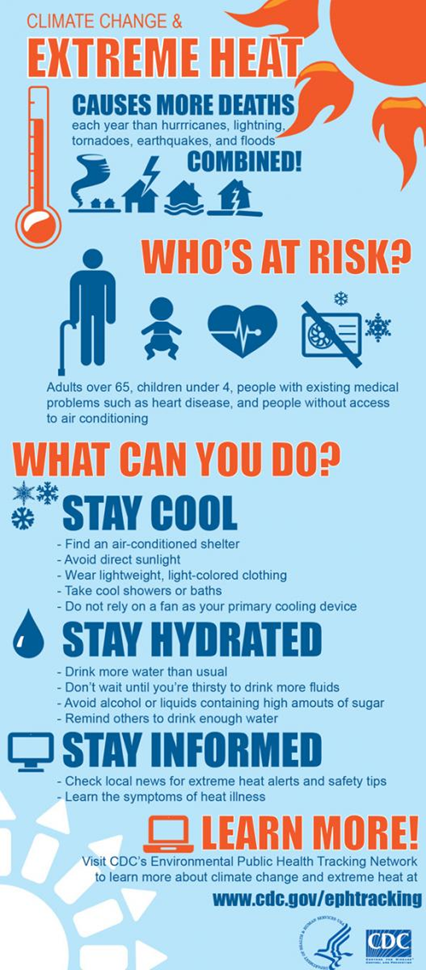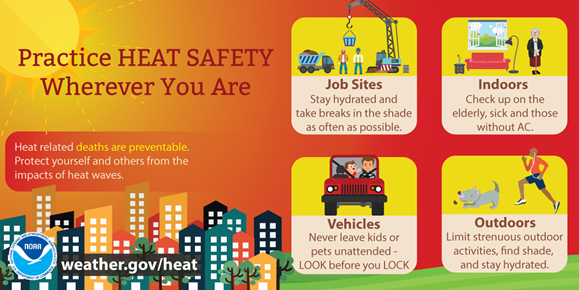How to Avoid Heat Stress
Heat stress is the broad term used to describe a range of health effects from mild symptoms to severe and life-threatening. Heat stress refers to the total heat load a person may be exposed to. This can be a combination of the heat generated by the person’s body; the air temperature and humidity; the radiant heat from the sun or from machines, processes; plus, clothing and PPE. Heat stress can happen any time those conditions add up — whether at home or at work. Of course, working outside on a hot, humid summer day increases the risks.
The symptoms of heat stress can range from mild (heat rash or sunburn) to severe (heat exhaustion and heat stroke). Below you’ll find information and charts that discuss the causes, symptoms, and treatment for the various levels of heat stress.
Keep in mind that it doesn’t have to be the hottest day of the summer for someone to feel the effects of heat stress.
___
On average, extreme heat has killed more people in the last 10 years than any other weather phenomena. Remember these tips for staying safe in extreme heat:
Hydrate. Whether you feel thirsty or not, drink plenty of water to avoid becoming dehydrated, especially when you’re working or exercising outside.
Educate yourself. Keep up with the latest temperature and heat index forecasts and current readings (take actions to stay cool and safe when the temperatures hit 85 degrees or the heat index hits 90 degrees). Know the warning signs of a heat illness, and how you can stay cool.
Act quickly when a heat illness is suspected. Seek medical attention immediately for any of these warning signs: cramping, rapid pulse, heavy sweating, hot red skin, dizziness, confusion, nausea, vomiting.
Take it easy. Anyone working or exercising outdoors should avoid overexertion, especially between the hours of 11 am and 6 pm. Take hourly breaks in the shade or in air conditioning.



